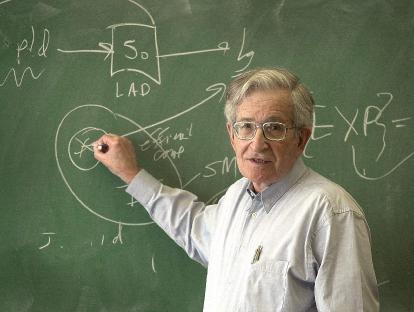OBJECTIVE: students will be able to present about First Language Acquisition and Universal Grammar Theories.
I. First Language Acquisition. Nature vs Nurture
THE NATURE VS NURTURE

kerry43.hubpages.com
The Nativist/Innate (Nature) View proposes that humans are pre-wired for language learning.
Language is a process of free creation; its laws and principles
are fixed, but the manner in which the principles of generation
are used is free and infinitely varied. Even the interpretation and
use of words involves a process of free creation. Noam Chomsky
Language is a process of free creation; its laws and principles are fixed, but the manner in which the principles of generation are used is free and infinitely varied. Even the interpretation and use of words involves a process of free creation.
Read more at http://www.brainyquote.com/quotes/authors/n/noam_chomsky.html#X2P8rIF0QUYZ5Oc6.99
Language is a process of free creation; its laws and principles are fixed, but the manner in which the principles of generation are used is free and infinitely varied. Even the interpretation and use of words involves a process of free creation.
Read more at http://www.brainyquote.com/quotes/authors/n/noam_chomsky.html#X2P8rIF0QUYZ5Oc6.99
The Empiricist (Nurture) View proposes that language is an entirely learned behavior.
"Learning would be exceedingly laborious, not to mention hazardous, if people had to rely solely on the effects of their own actions to inform them what to do. Fortunately, most human behavior is learned observationally through modeling: from observing others one forms an idea of how new behaviors are performed, and on later occasions this coded information serves as a guide for action."
-Albert Bandura, Social Learning Theory, 1977
You can take a look to your classmates' presentation about Language Acquisition here and if you have problems watching the videos you can go here.

Language is a process of free creation; its laws and principles
are fixed, but the manner in which the principles of generation
are used is free and infinitely varied. Even the interpretation and
use of words involves a process of free creation. Noam Chomsky
Read more at http://www.brainyquote.com/quotes/authors/n/noam_chomsky.html#X2P8rIF0QUYZ5Oc6.99
Read more at http://www.brainyquote.com/quotes/authors/n/noam_chomsky.html#X2P8rIF0QUYZ5Oc6.99
The Empiricist (Nurture) View proposes that language is an entirely learned behavior.
"Learning would be exceedingly laborious, not to mention hazardous, if people had to rely solely on the effects of their own actions to inform them what to do. Fortunately, most human behavior is learned observationally through modeling: from observing others one forms an idea of how new behaviors are performed, and on later occasions this coded information serves as a guide for action."
-Albert Bandura, Social Learning Theory, 1977
II. The work of Noam Chomsky. The Theory of Universal Grammar
Noam Chomsky
Noam Chomsky was born on December 7, 1928 in Philadelphia, Pennsylvania. His undergraduate and graduate years were spent at the University of Pennsylvania where he received his PhD in linguistics in 1955.
Chomsky, who has taught at the Massachusetts Institute of Technology since 1955, developed a theory of transformational (sometimes called generative or transformational-generative) grammar that revolutionized the scientific study of language. He first set out his abstract analysis of language in his doctoral dissertation (1955) and Syntactic Structures (1957). Instead of starting with minimal sounds, as the structural linguists had done, Chomsky began with the rudimentary or primitive sentence; from this base he developed his argument that innumerable syntactic combinations can be generated by means of a complex series of rules.
According to transformational grammar, every intelligible sentence conforms not only to grammatical rules peculiar to its particular language, but also to “deep structures,” a universal grammar underlying all languages and corresponding to an innate capacity of the human brain. Chomsky and other linguists who built on his work formulated transformational rules, which transform a sentence with a given grammatical structure (e.g., “John saw Mary”) into a sentence with a different grammatical structure but the same essential meaning (“Mary was seen by John”). Transformational linguistics has been influential in psycholinguistics, particularly in the study of language acquisition by children.
Universal Grammar
Universal grammar consists of a set of unconscious constraints that let us decide whether a sentence is correctly formed. This mental grammar is not necessarily the same for all languages. But according to Chomskyian theorists, the process by which, in any given language, certain sentences are perceived as correct while others are not, is universal and independent of meaning.Thus, we immediately perceive that the sentence “Robert book reads the” is not correct English, even though we have a pretty good idea of what it means. Conversely, we recognize that a sentence such as “Colorless green ideas sleep furiously.” is grammatically correct English, even though it is nonsense.
A pair of dice offers a useful metaphor to explain what Chomsky means when he refers to universal grammar as a “set of constraints”. Before we throw the pair of dice, we know that the result will be a number from 2 to 12, but nobody would take a bet on its being 3.143. Similarly, a newborn baby has the potential to speak any of a number of languages, depending on what country it is born in, but it will not just speak them any way it likes: it will adopt certain preferred, innate structures.
One way to describe these structures would be that they are not things that babies and children learn, but rather things that happen to them. Just as babies naturally develop arms and not wings while they are still in the womb, once they are born they naturally learn to speak, and not to chirp or neigh.
I think this SlideShare presentation may clarify the concept of Universal Grammar.


No comments:
Post a Comment